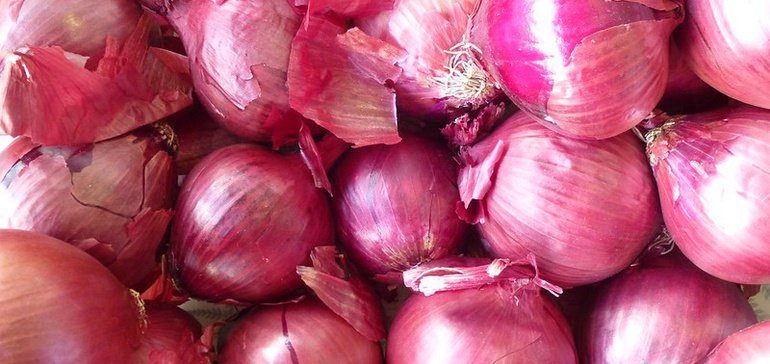Onion outbreak likely caused by contaminated water, FDA says

Dive Brief:
- A U.S. Food and Drug Administration investigation into last year’s massive salmonella outbreak caused by red onions — which resulted in 1,127 reported illnesses in the United States and 515 in Canada — found no conclusive proof as to what caused it. However, investigators believe it was likely contamination in irrigation water for a field where onions were grown because many different strains of salmonella were found there.
- While investigators were unable to find a strain of salmonella that was a perfect match for the one implicated in the outbreak, they took samples from various locations on and near onion farms in the area. Salmonella was present in samples from 10 different locations, the report says.
- The onion outbreak was the largest one reported in a decade, according to the FDA. It also was noteworthy because red onions had not previously been affiliated with an outbreak.
Dive Insight:
The FDA’s report reads like an ominous warning to farmers and consumers anywhere. A commodity crop that had never had an outbreak unexpectedly causes the largest one in years, with consumers in 48 states reporting illnesses. The true source of the contamination is not found, but many other ones were discovered.
The report shows potential contamination is prevalent throughout an average farming operation, and it can reach consumers through any crop, not just ones like romaine lettuce that have previously been common vectors for foodborne illness.
“Considering these findings, the FDA encourages all produce growers to assess risks that may be posed by adjacent and nearby land uses, especially as it relates to the presence of livestock and the interface between farmland, rangeland, irrigation water, and other agricultural areas,” Frank Yiannas, FDA’s deputy commissioner for food policy and response, said in a written statement.
During the outbreak, FDA was able to trace its source to red onions produced by Thomson International, which has growing facilities in Holtville and Bakersfield, California.
The federal agency and state investigators took samples from several locations in both facilities and observed multiple ways the crop could have been contaminated. Numerous birds and ground squirrels and their droppings were in the direct area of onion growing and harvesting. In Holtville, an alfalfa field with hundreds of grazing sheep was directly adjacent to an onion field.
All of these, the report points out, could lead to heightened danger for salmonella contamination. Additionally, the FDA noted there were several cattle feeding operations within 3.5 miles of the onion fields, which could have the potential to factor into contamination.
The Bakersfield facility included an onion packing house where inspectors found evidence of cats, birds and their nests, as well as evidence of pests on surfaces that came in contact with the crops. Food contact surfaces were not regularly inspected, maintained, cleaned or sanitized, inspectors found. There were few records of who cleaned and when, and water was rarely used in the cleaning process.
The report points out there is nothing unusual about these facilities and the way they were run and maintained. Irrigation water is rarely treated on onion farms, and the processing area in Bakersfield — including its cleaning protocol — is similar to others.
While this report highlighted a number of potential contamination hazards in a produce operation, there are no mandates for many of the things that could be done to improve safety protocols.
The FDA has been working toward implementing food safety regulations for agricultural operations through the Food Safety Modernization Act’s Produce Safety Rule, but is still in the rulemaking phase for requirements dealing with water quality and testing for most operations. The recommendations outlined in the FDA’s report on the outbreak ask produce growers and processors to take preventive measures, consider water testing and water treatment, and enhance their traceability framework so that sources of outbreaks can quickly and easily be pinpointed.
For its part, the FDA is working toward improving some of these things. Last summer, it partnered with the Environmental Protection Agency to adopt protocol to test and treat water used in agriculture. The program is voluntary and requires landowners to grant access to their water sources for testing. In addition, the FDA launched a 10-year initiative to use technology — including traceability — to improve food safety.
Until these items are fully implemented, the onion outbreak and the report about it are warnings to the industry that they need to make operational changes sooner rather than later.

